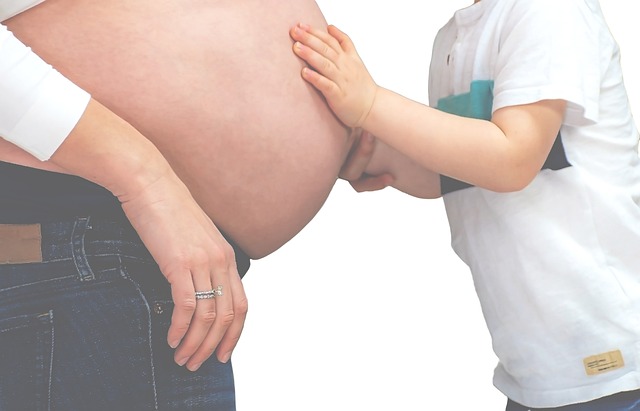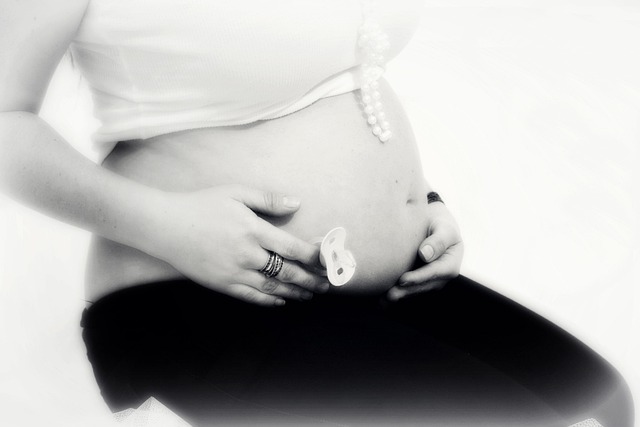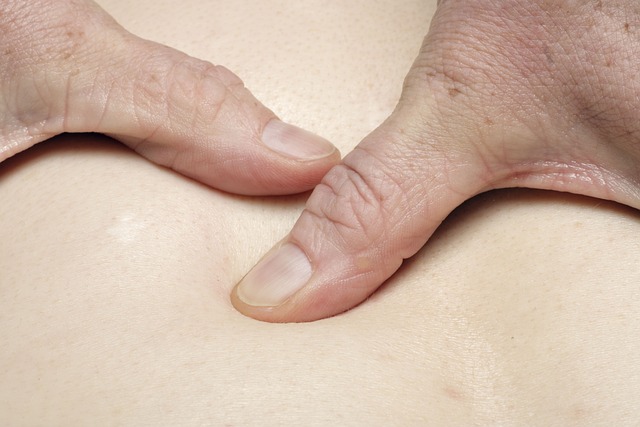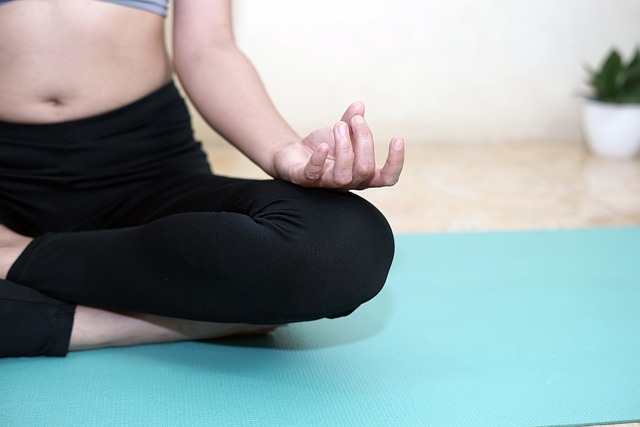Can i have a back massage in early pregnancy? How to safely get a massage
Massage during pregnancy, especially in the first trimester, is a topic surrounded by considerations of safety and potential benefits. Many pregnant women wonder if it’s safe to indulge in a massage, fearing an increased risk of miscarriage. However, experts generally agree that, when done correctly, massage is considered safe during pregnancy. It’s crucial, though, to consult with a healthcare professional, such as a doctor or midwife, before getting a prenatal massage.
Exploring the Benefits of Massage in Early Pregnancy: Safe Techniques and Possible Benefits for Pregnant Women
During the first trimester, lying flat on your back might be uncomfortable due to the growing uterus and increased blood volume. Therefore, prenatal massage therapists often recommend lying on your side. This position helps avoid pressure points that could potentially cause contractions or hinder blood flow. Deep tissue massage, a common type of massage, may be best avoided, and a gentler approach is generally considered safer.
Massage therapy during pregnancy has multiple positive effects. It can help manage common issues like back pain, muscle aches, and morning sickness. Additionally, it promotes relaxation and can alleviate stress, contributing to an overall sense of well-being for the expectant mother. The circulatory system benefits from increased blood flow, aiding in the reduction of swelling and promoting a healthier blood volume.
While massage is generally considered safe for most pregnancies, those with high-risk pregnancies should exercise caution. If you are experiencing complications or have concerns about massage during pregnancy, it’s essential to talk to your healthcare provider. They can provide guidance based on your specific situation and medical history.
Prenatal massage therapists, with proper training and experience, are able to recommend techniques that cater to the unique needs of a pregnant body. However, it’s crucial to avoid lying on your stomach during a massage, especially as major organs are developing in the growing baby.
Exploring the benefits of massage in early pregnancy involves understanding safe techniques and consulting with healthcare professionals. With the right precautions and expert guidance, massage therapy during pregnancy can be a complementary and alternative way to manage pain, enhance relaxation, and support the overall well-being of expectant mothers.
Is It Safe to Get a Massage During Early Pregnancy? Unveiling the Benefits and Safe Techniques for Prenatal Massage
When it comes to massage during pregnancy, particularly in the first trimester, many expectant mothers are cautious. It’s essential to talk to your doctor before scheduling a massage during the first trimester or any stage of pregnancy. Massage experts highlight the benefits of pregnancy massage, as it can be safe for pregnant women when done by a professional massage therapist.
During the early stages of pregnancy, the body goes through significant changes. While massage is generally safe during pregnancy, certain precautions must be taken. Avoiding massaging directly on the tummy is crucial to prevent potential issues such as contraindications and preterm labor.
Here’s what you should know about the safety of massage during the first trimester. Lying on your tummy, for example, is an area of controversy and should be avoided to prevent putting the baby at risk. Instead, techniques to help you relax and manage pain, considering your body changes and the increase in blood volume, can be employed.
Getting clearance from your doctor is crucial, especially if you have any concerns or complications. A professional massage therapist trained in prenatal massage can help you feel at ease and cater to your specific needs. Regular massage during pregnancy can assist in addressing common discomforts and promoting overall well-being.
Despite misconceptions, there is no evidence to support the idea that massage can cause a miscarriage. However, it’s essential to be aware of potential contraindications and the need for modifications, such as avoiding certain pressure points.

If you’re weeks pregnant and considering massaging, talk to your doctor and find a qualified therapist. They can guide you on safe techniques, ensuring that the massage is tailored to your individual circumstances. The increase in blood flow induced by massage can be beneficial, but it’s crucial to be cautious and prioritize the safety of both the mother and the baby.
Navigating the First Trimester: Understanding the Benefits and Safety of Pregnancy Massage for Expectant Mothers
The first trimester of pregnancy is a crucial period marked by significant changes in the mother’s body. During this time, many expectant mothers seek ways to alleviate the physical and emotional challenges that often accompany pregnancy. One option gaining popularity is pregnancy massage, a therapeutic approach designed to address the unique needs of pregnant women. In this article, we will explore the benefits and safety considerations of pregnancy massage during the first trimester.
Benefits of Pregnancy Massage in the First Trimester:
- Alleviating Physical Discomforts: Pregnancy often brings about physical discomforts such as back pain, headaches, and muscle tension. Massage therapy can provide relief by targeting specific areas of discomfort, helping expectant mothers cope with the changes in their bodies.
- Reducing Stress and Anxiety: The hormonal changes during the first trimester can contribute to increased stress and anxiety. Pregnancy massage promotes relaxation and can help regulate stress hormones, fostering a more positive emotional state for the mother.
- Improving Sleep Quality: Sleep disturbances are common during pregnancy, and the first trimester is no exception. Massage therapy has been shown to improve sleep quality by enhancing relaxation and reducing insomnia, providing much-needed rest for expectant mothers.
Safety Considerations for Pregnancy Massage in the First Trimester:
- Consultation with Healthcare Provider: Before scheduling a pregnancy massage, it is crucial for expectant mothers to consult their healthcare provider. Individual health conditions and the specific circumstances of the pregnancy may influence whether massage therapy is a suitable option.
- Experienced and Certified Massage Therapist: Choosing a massage therapist experienced in prenatal massage is essential. Certified professionals are trained to adapt their techniques to accommodate the unique needs and safety considerations associated with each trimester of pregnancy.
- Avoiding Certain Pressure Points: During the first trimester, some pressure points on the body are best avoided to reduce the risk of triggering contractions. A qualified prenatal massage therapist will be aware of these areas and adjust their techniques accordingly.
Navigating the first trimester of pregnancy requires careful consideration of the benefits and safety aspects of various therapeutic options. Pregnancy massage, when performed by a certified and experienced therapist with proper precautions, can be a valuable tool for promoting the well-being of expectant mothers. Always consult with a healthcare provider before embarking on any new wellness practices during pregnancy to ensure the safety of both the mother and the baby.
Unlocking the Potential Benefits of Prenatal Massage: Safe Practices for Massage Therapists and Pregnant Women
Safe Practices for Massage Therapists:
- Specialized Training: Massage therapists interested in providing prenatal massage should undergo specialized training in prenatal and postpartum massage techniques. This education equips therapists with the knowledge and skills necessary to adapt their practices to the unique needs of pregnant clients.
- Communication is Key: Before initiating a prenatal massage session, effective communication between the therapist and the expectant mother is crucial. The therapist should inquire about the client’s health, any specific discomforts, and how the pregnancy is progressing. This open dialogue helps tailor the massage to the individual’s needs.
- Positioning for Comfort: Adjusting the positioning of the pregnant client is essential for both comfort and safety. The use of specially designed bolsters and cushions allows the mother to lie comfortably on her side or semi-reclined, avoiding undue pressure on the abdomen and ensuring a relaxing experience.
- Gentle Techniques: Prenatal massage involves the use of gentle and modified techniques. Therapists should avoid deep tissue pressure and intense stretches, focusing instead on soothing strokes and light to moderate pressure. This ensures that the massage remains comfortable and safe for the expectant mother.
- Awareness of Contraindications: Massage therapists must be aware of any contraindications that may restrict or limit prenatal massage. Conditions such as preeclampsia, high-risk pregnancies, or certain medical complications may require modifications or, in some cases, the avoidance of massage. A thorough understanding of the client’s medical history is crucial.
Safe Practices for Pregnant Women:
- Consult with Healthcare Provider: Before scheduling a prenatal massage, pregnant women should consult with their healthcare provider to ensure that massage therapy is safe given their specific health circumstances. This is especially important during the first trimester when the pregnancy is still in its early stages.
- Choose a Qualified Therapist: Selecting a massage therapist with expertise in prenatal massage is vital. Look for certifications, training, and experience in working with pregnant clients. A qualified therapist will be knowledgeable about the physiological changes during pregnancy and can provide a safe and effective massage experience.
- Communicate Comfort Levels: Open communication with the massage therapist is key. Pregnant women should communicate any discomfort, pain, or concerns during the session. This ensures that the therapist can adjust techniques as needed, providing a customized and safe experience.
- Hydrate and Rest Afterwards: It’s advisable for pregnant women to stay hydrated before and after a massage session. Additionally, taking time to rest and allow the body to absorb the benefits of the massage can contribute to an overall positive experience.
Unlocking the potential benefits of prenatal massage involves collaboration between skilled massage therapists and informed expectant mothers. By following safe practices, maintaining open communication, and prioritizing individualized care, prenatal massage can be a valuable tool in promoting the well-being of both the pregnant woman and her growing baby. As with any wellness practice during pregnancy, seeking guidance from healthcare professionals ensures a safe and positive experience.
Safety First: The Ins and Outs of Massage in Early Pregnancy, Including the Benefits and Safe Techniques for Expectant Moms
Embarking on the journey of pregnancy brings with it a myriad of physical and emotional changes. For many expectant mothers, seeking ways to manage discomfort and promote relaxation becomes a priority. One option gaining popularity is massage therapy, tailored specifically for the unique needs of pregnant women. In this article, we will explore the benefits of massage during early pregnancy, along with safe techniques and considerations for expectant moms.
Benefits of Massage in Early Pregnancy:
- Alleviating Common Discomforts: Early pregnancy often comes with symptoms such as nausea, fatigue, and muscle tension. Massage can provide relief by addressing these discomforts through gentle, soothing techniques.
- Reducing Stress and Anxiety: The emotional rollercoaster of early pregnancy can contribute to heightened stress and anxiety. Massage therapy promotes relaxation, reduces cortisol levels, and helps expectant mothers manage emotional well-being.
- Enhancing Circulation: Massage improves blood circulation, which is especially beneficial during pregnancy. Better circulation can alleviate swelling in the extremities and enhance the delivery of nutrients to both the mother and the developing fetus.
- Improving Sleep Quality: Quality sleep can be elusive during early pregnancy. Massage’s calming effect can aid in improving sleep quality, allowing expectant mothers to better cope with the fatigue associated with early pregnancy.
Safe Techniques for Massage in Early Pregnancy:
- Positioning Matters: Optimal positioning is crucial for the safety and comfort of the expectant mother. Side-lying positions with proper support and cushioning for the abdomen are commonly used to avoid undue pressure on the uterus.
- Gentle Pressure and Strokes: Early pregnancy massages should employ gentle pressure and strokes. Deep tissue work and intense pressure on certain areas should be avoided to prevent potential complications.
- Focus on Specific Areas: Targeting areas prone to tension, such as the neck, shoulders, and lower back, can be particularly beneficial. These areas often bear the brunt of the physical changes that accompany early pregnancy.
- Avoid Certain Pressure Points: Some pressure points are associated with potential contraindications during pregnancy. A knowledgeable massage therapist will avoid these areas to ensure the safety of both the mother and the developing baby.
Considerations for Expectant Moms:
- Consultation with Healthcare Provider: Prior to scheduling a massage session, expectant mothers should consult with their healthcare provider. This is especially important in the early stages of pregnancy to ensure that massage is safe given individual health circumstances.
- Choose a Qualified Massage Therapist: Selecting a massage therapist experienced in prenatal massage is crucial. Look for certifications and expertise in working with pregnant clients to ensure a safe and effective experience.
- Communicate Comfort Levels: Clear communication with the massage therapist is essential. Expectant mothers should express any discomfort, pain, or concerns during the session to allow for adjustments in technique and pressure.
Massage during early pregnancy can be a valuable tool for enhancing the well-being of expectant mothers, but safety should always be the top priority. By understanding the benefits, employing safe techniques, and communicating openly with healthcare providers and massage therapists, expectant moms can navigate early pregnancy with comfort and peace of mind. As with any wellness practice during pregnancy, seeking professional guidance ensures a safe and positive experience for both mother and baby.
For a safe and relaxing massage experience, contact us ! Your well-being is our top priority.









 With evidence-based practices, you can trust that our techniques are grounded in medical knowledge and proven to yield results. Whether you’re a seasoned pilates enthusiast or new to the practice, our physiotherapists will inform and supervise you through every step.
With evidence-based practices, you can trust that our techniques are grounded in medical knowledge and proven to yield results. Whether you’re a seasoned pilates enthusiast or new to the practice, our physiotherapists will inform and supervise you through every step. The experience is both challenging and confidence-building, with gradual progression to achieve better results. Clinical Pilates not only helps in injury rehabilitation but also serves as a preventive measure against future injuries. It emphasizes core stability, corrects posture, and improves overall fitness.
The experience is both challenging and confidence-building, with gradual progression to achieve better results. Clinical Pilates not only helps in injury rehabilitation but also serves as a preventive measure against future injuries. It emphasizes core stability, corrects posture, and improves overall fitness.
 The main objective is to aid in recovery, especially for individuals dealing with injuries, chronic pain, or mobility issues. With a strong emphasis on technique and proper alignment, Clinical Pilates ensures that every single exercise is suitable and safe for the participants.
The main objective is to aid in recovery, especially for individuals dealing with injuries, chronic pain, or mobility issues. With a strong emphasis on technique and proper alignment, Clinical Pilates ensures that every single exercise is suitable and safe for the participants. Whether you’re an athlete seeking to optimize performance or someone recovering from an injury, our approach can benefit you. With our guidance, you’ll not only recover from injuries more efficiently but also develop a foundation for long-term fitness and injury prevention.
Whether you’re an athlete seeking to optimize performance or someone recovering from an injury, our approach can benefit you. With our guidance, you’ll not only recover from injuries more efficiently but also develop a foundation for long-term fitness and injury prevention.

